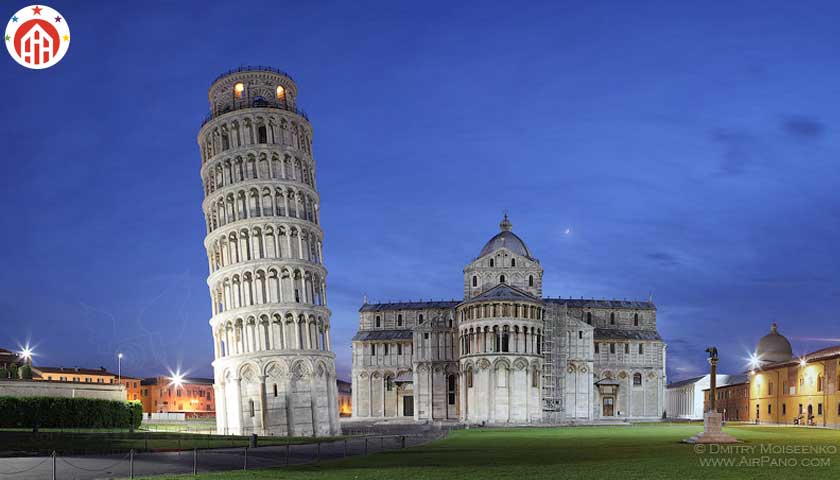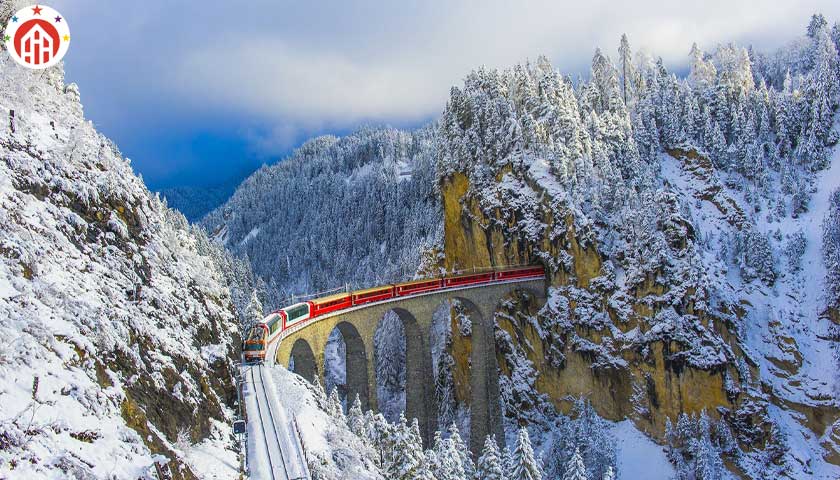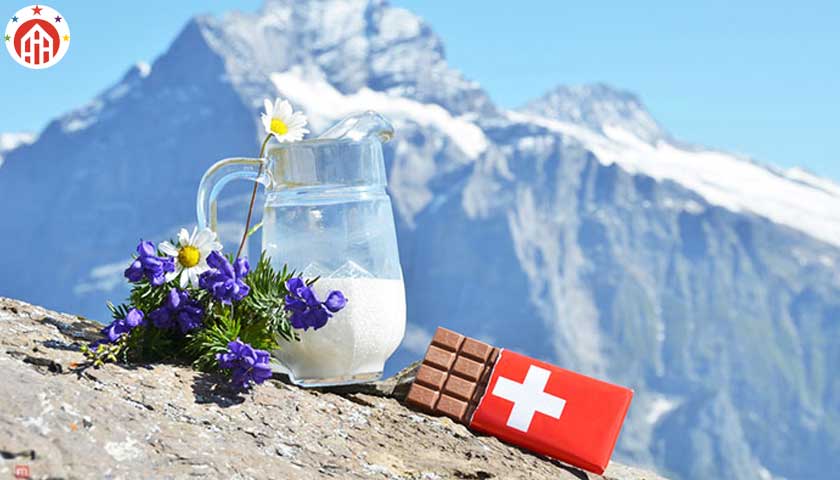The Leaning Tower of Pisa’ has become a symbol of Italy, hence it’s a high selling tour for tourist bus companies in Tuscany. However, in this post, we will tell you how you can take a short trip to Pisa from Florence on a budget by traveling on trains.
Tower of Pisa quick facts:
→ Name: Tower of Pisa, Leaning Tower of Pisa, Bell Tower of Pisa
→ Italian Name: Torre Pendente di Pisa
→ Location: City of Pisa, Italy.
→ Accommodation: Find Hotels in Pisa
→ Construction Year: started in 1173, finished in 1399
→ Original Height: 60 m
→ Actual Height: 56.67m =highest side; 55,86m =lowest side
→ Stairs: 251 steps
→ Weight: 14,500 tonnes
Leaning Tower of Pisa General Info:
The Tower of Pisa is located next to the Cathedral of Pisa, in Piazza dei Miracoli (Square of miracles) in the city of Pisa, Italy.
The building of the leaning Tower of Pisa, and especially its completion, represents the last element in the compliment of the ceremonial complex of monuments that enrich the Piazza dei Miracoli (Square of miracles).
The project included four representative monuments in the city of Pisa, Italy: the Cathedral of Pisa (Il Duomo di Pisa), the Baptistry, the Bell Tower of Pisa, Monumental Cemetery
Architecture style → The leaning Tower of Pisa is a medieval architecture, in Romanesque style.
Construction time → The construction of Tower of Pisa began in 1173 and was completed in the 14th century, in 1399
Design → It is considered that the architects and engineers who designed the leaning Tower of Pisa are: Bonanno Pisano, Gherardo di Gherardo, Giovanni Pisano, Giovanni di Simone
The first phase of Pisa Tower’s construction is attributed to Bonanno Pisano or Gherardo di Gherardo.
Giovanni Pisano and Giovanni di Simone continued the second phase of the building. Tommaso Pisano finished the tower’s construction.
Tower of Pisa Interesting Facts:
Pisa got its name in 600 BC from a Greek word meaning “marshy land.”
There are several other towers in Pisa that also lean: the bell tower at the church of St. Michele dei Scalzi, and the bell tower at the church of St. Nicola.
The cathedral and baptistery are also sinking.
Galileo was baptized in the baptistery in 1565.
The foundation of the cemetery, Campo Santo, is made up of 53 shiploads of earth that were brought back from the Hill of Calvary in Jerusalem
How tall is the Tower of Pisa?
→ Measurements
The original completed height of the Tower of Pisa is 60 meters. Actually the tower’s height is 56.67m on the highest side and 55,86m on the lowest side.
The outside diameter of the leaning Tower of Pisa’s base is 15.484 meters.
Width of walls at base is 2.4384 meters
Weight of tower is approximately 14,500 tonnes
There are 251 steps from the bottom to the top of the Pisa tower.
The Leaning Tower of Pisa
The Leaning Tower of Pisa is the piazza’s crowning glory.
Although only a third as high as the Washington Monument, it was a miracle of medieval engineering, probably the tallest bell towers in Europe.
With 207 columns ranged around eight stories, Tower of Pisa looks like a massive wedding cake knocked precariously askew by a clumsy giant guest.
The construction of Tower of Pisa began in August 1173 and continued for about 200 years due to the onset of a series of wars. Till today, the name of the architect is a mystery.
Leaning Tower of Pisa and CathedralThe leaning Tower of Pisa was designed as a circular bell tower that would stand 185 feet high. It is constructed of white marble.
The tower has eight stories, including the chamber for the bells.
The bottom story consists of 15 marble arches. Each of the next six stories contains 30 arches that surround the tower.
The final story is the bell chamber itself, which has 16 arches. There is a 297 step spiral staircase inside the tower leading to the top.
The top of the leaning tower of Pisa is about 17 feet off the vertical.
The tower is also slightly curved from the attempts by various architects to keep it from leaning more or falling over.
Many ideas have been suggested to straighten the Tower of Pisa, including taking it apart stone by stone and rebuilding it at a different location.
In the 1920s the foundations of the tower were injected with cement grouting that has stabilized the tower to some extent.
Until recent years tourists were not allowed to climb the staircase inside the tower, due to consolidation work.
But now the leaning Tower of Pisa is open again and it is one of the most popular tourist attractions in Italy
History of Pisa
The City of Pisa played an important role in Italy’s history.
As a vital seaport and a major center of trade, many people visited the city.
In the early days, Pisa was a popular resting place for pilgrims from Europe on their way to Jerusalem.
The military fleet of Pisa was most successful.
In 871 the fleet helped defend the Salerno from attackers, and it was Pisans that forced the Arab troops from the islands of Corsica and Sardinia in 1015.
As their riches and influence increased, the city of Pisa, Italy, became more and more powerful.
The island of Corsica came under Pisan control in 1077, and in 1113 so did the Balearic Islands near Spain. The Pisans enjoyed a time of great prosperity
The decline of Pisa began in 1284 when Genoa defeated the Pisans in battle.
The islands controlled by Pisa were lost and the influence began to decline.
By the 15th century the Arno River had become so filled with silt that it completely cut off Pisa from the sea. This marked the end of Pisa as a useful port and the end of its wealth and power.
Pisa Tower Construction
In 1174, engineer Bonnano Pisano laid a marble foundation large enough to park about 16 Ferrari 328s in and started building the campanile for the cathedral and baptistry of Pisa.
The Romanesque Tower of Pisa, comprising 14,000 tonnes of white marble, was completed 176 years later – but it was also embarrassingly crooked.
Because there was a lot of water under the ground in this area, Bonnano was able to place the foundation only about 10 feet down into the ground.
As the first story of the tower was completed, the south side began to sink.
The builders tried to make it look better by building the columns and arches on the south side about an inch taller than those on the north side.
However by the time they got to the fourth story, they had to make the southern columns 2 inches taller than the northern ones. The tower just continued to lean, and because of the difficulties the construction was stopped.
In 1234, the architect Benenato discovered that the tower was leaning even more. Now the south side of the fourth story was a full 6 inches shorter than the north side.
He added a fifth story, again making the south columns taller than the north ones. After adding that one story, Benenato gave up, and again construction on the tower stopped.
Almost thirty years later, in 1260, William of Innsbruck added the sixth and seventh stories to the Tower of Pisa.
In 1350 Tommaso Pisano started work on the eighth story of the tower, the bell chamber. He found that the tower was still sinking, and so he made the spiral stairs inside the tower and the wall of the bell chamber higher on the south side than on the north.
The tower was finally completed in 1372, almost 200 years after it was begun, and it was still leaning.
WHO built the leaning tower of Pisa?
The real identity of Tower of Pisa’s architects is a mystery.
The most accredited architects of this first phase of work are Bonanno Pisano and Gherardo din Gherardo.
The second phase of construction started in 1275, and the work is attributed to Giovani di Simone. Tommaso Pisano (1350-1372) was the architect who finished the work.




